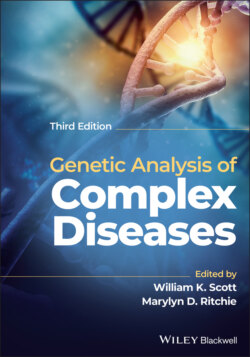Читать книгу Genetic Analysis of Complex Disease - Группа авторов - Страница 16
Determining that a Trait Has a Genetic Component
ОглавлениеIt is critical that as much as possible be known about the genetic basis of a complex trait prior to determine the most appropriate study design for gene identification. That a trait “runs in families” is insufficient evidence, since this phenomenon can occur for several reasons other than shared genetic susceptibility, including shared environmental exposure and biased ascertainment. As outlined in Chapter 3, there are numerous lines of evidence that can be examined, including family studies, segregation analysis, twin studies, adoption studies, heritability studies, and population‐based risks to relatives of probands (the initially identified individual with disease). For most traits being contemplated, some such data already exist in the literature. A thorough review of this literature may provide most of the necessary information and point out any missing data. The data may not only indicate the strength of the genetic effect on the trait but also give some indication of the underlying genetic model. For example, there may be obvious evidence of a single “major” gene, such as in Huntington’s disease, or multiple genes interacting in complex ways, such as in multiple sclerosis (Sadovnick et al. 1996).
